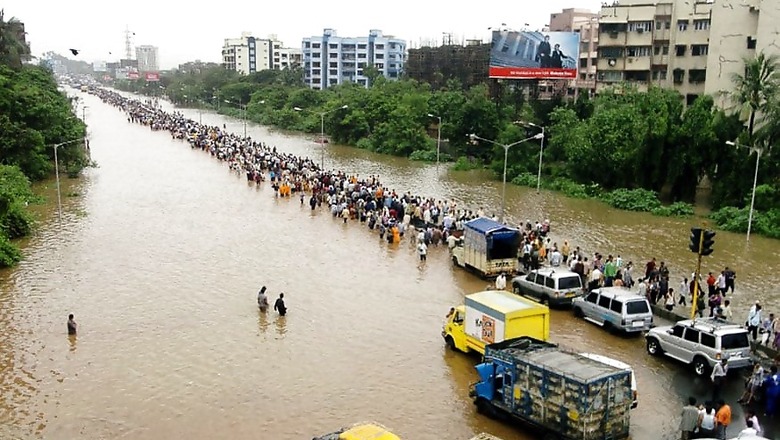
views
When Mumbai last sank, in the floods of 2005, India’s National Disaster Management Authority (NDMA) realised that it had to prepare for urban floods as a phenomenon different from floods in other areas. It’s 2008 flood management guidelines recognise this as a growing problem “caused by increasing incidence of heavy rainfall in a short period of time, indiscriminate encroachment of waterways, inadequate capacity of drains” and that “separate guidelines for its management are being prepared and will be issued soon”.
While the country waits for such guidelines, Mumbai residents grappling with Monday’s flooding can look to certain safety instructions the NDMA has put out for cities.
Electricity and appliances
The first in the list of dos and don’t is to turn off all electrical and gas appliances and not touch open wires. People should stay away from power lines, especially those running through open water, and never turn on ceiling fixtures -- fans or lights-- if the ceiling is wet. For anyone with such plans, do not use your vacuum cleaner to remove standing water.
Kit
Carry an emergency kit at all times. This kit should have “a torch, sheets/ blankets, waterproof clothing, battery-operated radio, bottled water, first-aid kit, medication, personal valuables and personal documentation”. The guidelines issued by the US Federal Emergency Management Agency (FEMA) expands on these, saying people should have at least a three day supply of non-perishable food and one gallon of water per person per day for at least three days. NDMA warns against eating any food that has come into contact with flood water for fear of contamination. FEMA also recommends basic tools such as wrench, pliers, plastic ties.
Transport
Do not walk through moving water, even if shallow, as currents can knock anyone off their feet. FEMA guidelines say as little as 6 inches (15 centimeters) of moving water can make one fall. If walking is unavoidable, use a stick to check for holes, ditches and the depth of the water. Do not attempt swimming either, as currents will carry a person away or they’ll get hit by floating objects. Though people may use their cars to escape, once an area has flooded, driving becomes dangerous. The driver may not be able to see abrupt drop - offs, and barely half a meter of flood water can carry a car away.
Contaminated water
The best case scenario really is moving to higher ground when flooding is imminent. Flood water can be dangerous to come in contact with as, both NDMA and FEMA note, it can be contaminated by sewage, oil or chemicals.


















Comments
0 comment